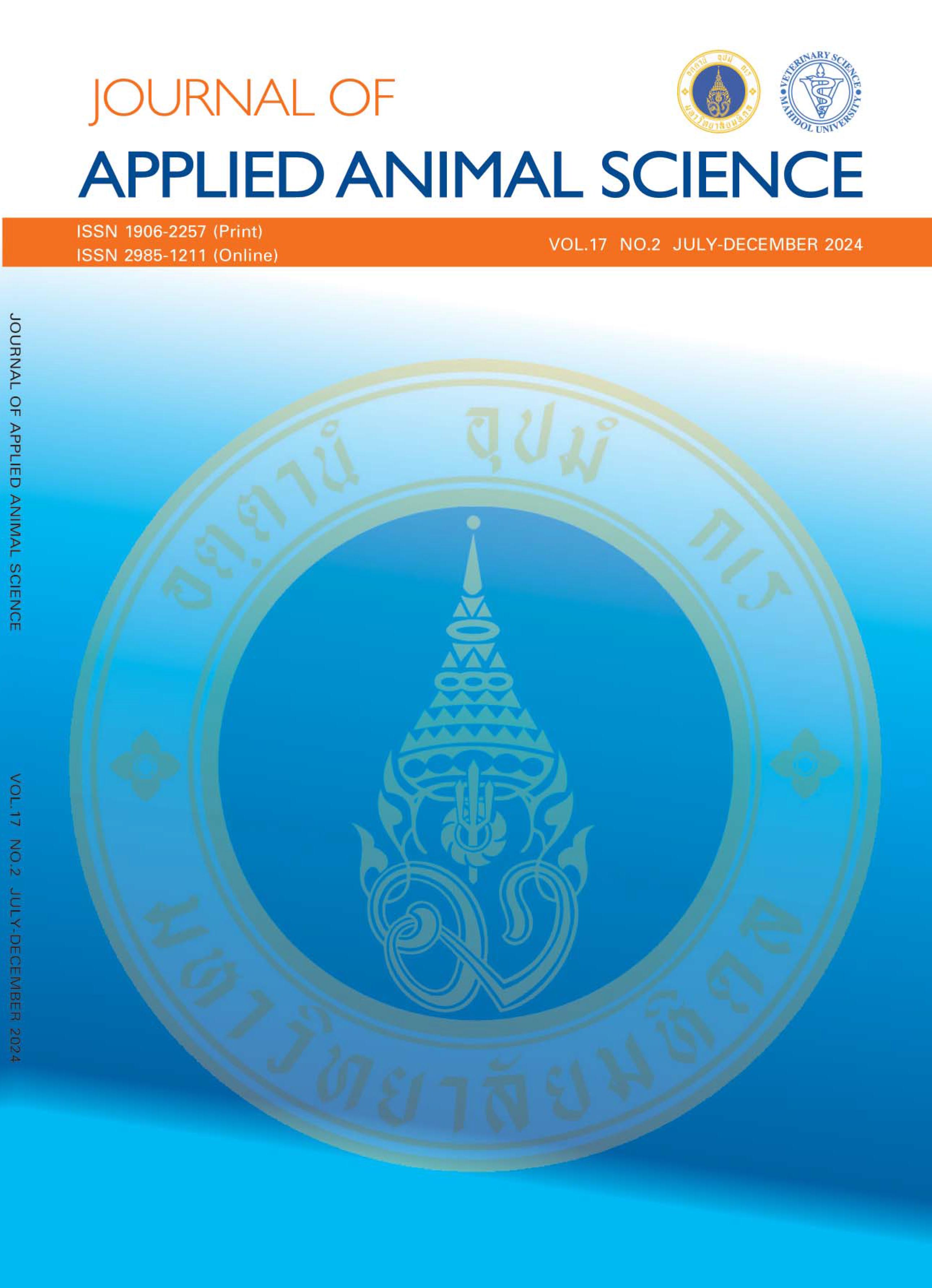Application of Sutures for Skull Stabilization: A Novel Technique for Cranioplasty in Fennec Fox (Vulpes zerda)
Keywords:
CT scan, Skull, Suturing, Treatment, SurgeryAbstract
Skull fractures in fennec foxes (Vulpes zerda) are a serious issue that demands urgent intervention because of the species' fragile cranial structure. Compressed fractures can cause brain injury, bleeding within the skull, and neurological disability. Failure to promptly manage these complications can be fatal. A 1-month-old, 0.29 kg female fennec fox suffered a traumatic bite wound to its head from a skunk. Panalai Veterinary Hospital received a referral for the fennec fox, which showed signs of lethargy, ataxia, and left circling. The heart rate, respiratory rate, capillary refill time (CRT), and rectal temperature were within normal range. Diagnostic imaging, including a computed tomography (CT) scan, revealed collapse of the frontal and parietal bones, invading the left parietal-temporal lobe of the brain, and a fracture of the vertical ramus of the left mandible. Surgical interventions were performed with frontal and parietal bone decompression, as well as suturing the fractured skull using a tapered needle and a 4-0 polydioxanone suture in a simple interrupted pattern, without the use of skull mesh. Postoperative care included intensive monitoring, hyperbaric oxygen therapy, and acupuncture to promote brain healing, wound recovery, and neurological improvement. The fox was administered amoxicillin-clavulanic acid, followed by a switch to cefovecin sodium for infection control; pregabalin for neuropathic pain; meloxicam for inflammation management; vitamin B complex and Aktivait dog® for nerve function support; and dimenhydrinate to alleviate vestibular signs. The wound, appetite, ataxia, and left circling were gradually improving. The fox fully recovered within two months and returned to a normal daily life, although it continued to exhibit mild circling before eating. This case highlights the importance of prompt and comprehensive treatment for skull fractures in fragile species. The successful application of straightforward surgical techniques demonstrates their practicality and adaptability for managing complex cranial injuries in small animals. These methods could serve as a valuable reference for addressing similar challenges in other small exotic mammals with delicate skull structures.
References
AlSarhan MA. A systematic review of the tensile strength of surgical sutures. J Biomater Tissue Eng. 2019;9(1):1-10.
Amengual-Batle P, José-López R, Durand A, Czopowicz M, Beltran E, Guevar J, et al. Traumatic skull fractures in dogs and cats: A comparative analysis of neurological and computed tomographic features. J Vet Intern Med. 2020;34:1975-85.
Anderson AB, Tintle SM, Potter BK. Suture and needle characteristics in orthopedic surgery. JBJS Rev. 2020;8(7):e19.00133.
Birnie GL, Fry DR, Best MP. Safety and tolerability of hyperbaric oxygen therapy in cats and dogs. J Am Anim Hosp Assoc. 2018;54:188-94.
Bullock MR, Chesnut R, Ghajar J, Gordon D, Hartl R, Newell DW, et al. Surgical management of depressed cranial fractures. Neurosurgery. 2006;58(3 Suppl):S56-60.
Dewey CW, Da Costa RC. Practical guide to canine and feline neurology. New York: John Wiley & Sons; 2015.
Dierckx De Casterlé A, Van Goethem B, Kitshoff A, Bhatti SFM, Gielen I, Bosmans T, et al. Titanium mesh reconstruction of a dog's cranium after multilobular osteochondrosarcoma resection. Vlaams Diergeneeskd Tijdschr. 2017;86:232-40.
Illukka E, Boudrieau RJ. Surgical repair of a severely comminuted maxillary fracture in a dog with a titanium locking plate system. Vet Comp Orthop Traumatol. 2014;27:398-404.
James J, Oblak ML, Zur Linden AR, James FMK, Phillips J, Parkes M. Schedule feasibility and workflow for additive manufacturing of titanium plates for cranioplasty in canine skull tumors. BMC Vet Res. 2020;16:180.
Jarasviriyagul N, Chanasriyotin C. Comparison of tensile strength of skin closure by simple interrupted, simple continuous, and staples. Int Surg J. 2023;10(9):1439-42.
Kingdon J. Vulpes zerda Fennec fox. In: Hoffmann M, editor. Mammals of Africa. Volume V: carnivores, pangolins, equids and rhinoceroses. 1st ed. New York: Bloomsbury Publishing; 2013. p.74-7.
Krongthong Oraveerakul. Acupunctural Treatment of Head and Spinal Injuries in Dogs: A Case Report. Proceeding of the WSAVA congress. Bangkok, Thailand; 2003.
Merritt JF. The Biology of Small Mammals. Baltimore: Johns Hopkins University Press; 2010.
Nunamaker DM. Textbook of small animal orthopaedics. New York: Lippincott Williams & Wilkins; 1985.
Salmina AG, Castelli E, Pozzi A. Treatment of traumatic cranial fracture with sonic activated polymer pins and plates resorbable implants in a dog. Schweiz Arch Tierheilkd. 2023;10:667-72.
Wolfs E, Arzi B, Guerrero Cota J, Kass PH, Verstraete FJM. Craniomaxillofacial trauma in immature dogs-etiology, treatments, and outcomes. Front Vet Sci. 2022;9:932587.
Downloads
Published
How to Cite
Issue
Section
License
Copyright (c) 2024 Mahidol University Faculty of Veterinary Science

This work is licensed under a Creative Commons Attribution-NonCommercial-NoDerivatives 4.0 International License.
Published articles are under the copyright of the Journal of Applied Animal Science (JAAS) effective when the article is accepted for publication. The editorial boards claim no responsibility for the content or opinions expressed by the authors of individual articles in this journal. Partially or totally publication of an article elsewhere is possible only after the consent from the editors.



